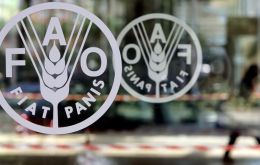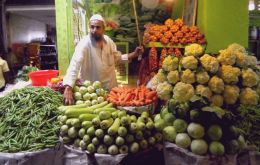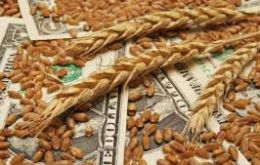MercoPress. South Atlantic News Agency
Tag: FAO Cereal Price Index
-
Tuesday, November 11th 2025 - 15:23 UTC
FAO Food Prices decline in October, with the exception of beef

World food commodity prices generally declined in October, driven largely by ample global supplies, according to the benchmark measure released by the Food and Agriculture Organization of the United Nations (FAO). However beef continued to rise because of a very firm global demand.
-
Monday, September 9th 2024 - 13:02 UTC
FAO August Food Price Index declined marginally, meat and cereals down, dairy and vegetable oil up

The benchmark for world food commodity prices declined marginally in August, as decreases in quotations for sugar, meat, and cereals outweighed increases in those for vegetable oils and dairy products, the Food and Agriculture Organization of the United Nations (FAO) reported.
-
Saturday, August 6th 2022 - 11:31 UTC
World food commodity prices dropped significantly in July, FAO report

The benchmark for world food commodity prices declined significantly in July, with major cereal and vegetable oil prices recording double-digit percentage declines, the Food and Agriculture Organization of the United Nations (FAO) has reported.
-
Thursday, September 5th 2019 - 20:23 UTC
World cereal and sugar prices dip in August, but meat is up 12.3% in eight months

Global food prices declined in August, driven by sharp falls in the prices of staple cereals and sugar, according to a report issued today by the Food and Agriculture Organization of the United Nations.
-
Monday, January 14th 2019 - 09:26 UTC
FAO Food Price Index fell almost 22% in 2018 compared to 2017

Global food prices held broadly stable in December, with rising international cereal prices offsetting declining sugar and dairy quotations, the Food and Agriculture Organization of the United Nations (FAO) said. However overall for 2018, the FAO Food Price Index fell by almost 22% from 2017
-
Monday, October 15th 2018 - 08:15 UTC
FAO food price index down in September because of growing inventories

Global agricultural food commodity prices fell in September due to growing inventories of key staples. The FAO Food Price Index declined 1.4% from August and is now 7.4% below its level during September 2017.
-
Tuesday, May 23rd 2017 - 14:55 UTC
Global food prices down with expectations of robust supplies in key staples

Global food commodity prices fell in April amid expectations of ongoing robust supplies of many key staples. The FAO Food Prices Index averaged 168 points in April, down 1.8% from March although remaining 10% higher than a year earlier.
-
Tuesday, November 15th 2016 - 20:09 UTC
World cereal production remains strong; summer 2017 crops in South America expected to expand

World cereal production for 2016 should amount to 2 571 million tonnes, up marginally from FAO's October forecast and 1.5% above the 2015 output. The updated figure, released Monday in the Cereal and Supply Demand Brief, reflects a substantial upgrade of the outlook for world wheat production, which is now expected to rise to 746.7 million tonnes, a 4.3 million increase from FAO's October forecast.
-
Tuesday, December 8th 2015 - 00:27 UTC
Major food commodity prices down 18% over a year ago, says FAO index

Major food commodity prices fell in November, reversing about half their rise in the previous month, as the cost of internationally-traded staples, except for sugar, fell across the board. The FAO Food Price Index averaged 156.7 points in November, down 1.6 percent from its revised October average, and 18% below its value a year earlier.
-
Thursday, December 11th 2014 - 12:40 UTC
FAO food price index in November remained stable for third month running

FAO's monthly food price index was stable in November, as vegetable oil and grain prices inched up and offset ongoing declines in dairy prices. The Food Price Index averaged 192.6 points, marking the third consecutive month of stability. The Index now stands 13 points, 6.4 percent below its level in November 2013.
